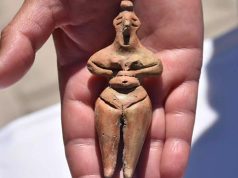
The article, whose lead authors are researchers from the Middle East Technical University and Hacettepe University, has been published in the journal “Current Biology.”
The study, in which 55 researchers working in the fields of genetics, anthropology, and archaeology in various countries such as Sweden, Greece, Georgia, Azerbaijan, Germany, and the USA took part, shows how human mobility has changed over the last 10 thousand years in Anatolia and the Eastern Mediterranean.
The study was supported by various research funds such as TÜBİTAK and the European Research Council (ERC). In addition to confirming the knowledge that human mobility did increase with agriculture, the research also includes new information on how the patterns of this mobility changed over time. It also reveals that in the last few thousand years, in parallel with the development of class societies and the increase in the hierarchy, gender roles in human mobility have also differentiated.
Ancient DNA shows how human activity in Anatolia and the Eastern Mediterranean over the past 10,000 years has changed over time
Anatolia is defined as a bridge between continents. Researchers from METU and Hacettepe University, in their study published today in the journal “Current Biology,” analyzed who crossed this bridge and the traces left by passers-by using ancient genomes.
Researchers consisting of geneticists, anthropologists, and archaeologists used ancient genomes to investigate how human mobility in Southwest Asia and the Eastern Mediterranean changed in the past 10,000 years, namely since the invention of agriculture.
Within the study, 35 new ancient genomes were produced from Anatolia, Greece, Georgia, Azerbaijan, and Iran. The oldest genomes from Anatolia come from Musular (Aksaray), located in Cappadocia and dated 9 thousand years ago. In addition to the Musular genomes, genome data belonging to a total of 10 individuals from the Bronze Age, Hellenistic Period, Roman and Ottoman periods were produced from various historical settlements such as Ulucak (İzmir), Çine-Tepecik (Aydın), Boğazköy/Hattusa (Çorum) and Gordion (Ankara). The new data provided us with a better understanding of Anatolia’s past genetic diversity.
Analyzing the data, the researchers found that genetic diversity in Anatolia has steadily increased over the last 10,000 years. This change stems from communities with different genetic backgrounds as they came to Anatolia from time to time and got mixed up with the locals. In other words, our region has constantly been receiving immigrants in the past, too, similar to today. Likewise, the team which examined regions such as Greece, Iran, the South Caucasus, and the Levant found that genetic diversity constantly increased in these regions and that these places received migration, as well.
When the researchers analyzed the data in greater detail, they found that genetic mixing between the Neolithic period and immediately after (between 6,000 and 10,000 years ago) was between regions in Southwest Asia and the eastern Mediterranean. For example, they observed that Anatolia received immigration from the Caucasus, Iran, and the Levant and that there was also immigration from Anatolia to Greece, the Caucasus, Iran, and the Levant. The authors interpret this result as an indicator showing that the agricultural culture developed independently in different regions of Southwest Asia while the societies of the region mixed.
Dilek Koptekin, the first author of the article to share information about the study, said that in addition to confirming the knowledge that human mobility increases with agriculture, with this research, they also gained new information about how the patterns of this mobility change over time. Koptekin is quoted saying, “While the mobility took place in Southwest Asia in the first half of the Holocene, immigrants from more distant regions came to this region with the Bronze Age in the last 6,000 years”.
Koptekin, who completed her doctorate at METU Graduate School of Informatics this year, stated that they called this result the “Expanding Mobility Model.” Additionally, Koptekin said, “There must be many technological and social reasons behind the increase in mobility between distant regions,” and went on to say, “Four thousand years ago, horses were domesticated, wheels were introduced, new shipping methods were developed. These facilitated long-distance human mobility. Moreover, trade routes were established between distant regions. Again, the establishment of states and armies may have increased wide-range mobility.”
Ezgi Altınışık, one of the authors of the study from the Department of Anthropology at Hacettepe University, cited the contribution of Central Asia to the gene pool of Anatolia over the last millennium as an example of this type of large-scale mobility. According to the findings of a genetic study published in the journal PNAS previous year, approximately 10% of the ancestors of today’s Anatolian people are Turkic groups from Central Asia.
Füsun Özer from the Department of Anthropology at Hacettepe University, one of the advisors of the study, said that according to the ancient DNA findings, it is common for immigrants to mix with locals in other regions as well as in Anatolia, and therefore continuity is dominant in the history of the communities. Özer also stated, “In most cases of migration, those who migrated to a region from outside did not cause the local population to decrease or disappear, but rather mixed with them. It is rare for the natives of a region to disappear following the migration. In fact, there is no clear example of this in the last 10 thousand years of Anatolia’s history. Migration and mixing continued without stopping, accelerating, or slowing down. As a result, genetic diversity has steadily increased.”
Mehmet Somel from the Department of Biological Sciences at METU, another advisor involved in the study, said, “In my opinion, our newest result is the relationship between human mobility and gender roles.” Somel noted that they have observed that the male contribution has relatively increased in the mobility observed in the last 10 thousand years, while the female contribution has decreased.
According to Somel, these findings can be interpreted as either increasing the role of men in migration processes or reducing the role of women. Somel continued: “We don’t know if it’s due to wars, trade with remote areas, or other immigration processes. Our results imply that gender roles in human mobility have also diverged in parallel with the development of class societies and increased hierarchy over the past few millennia. Of course, it also reminds us that we were not always the same as we are today.”
In the studies within the article, 55 scientists participated from different countries, such as Sweden, Greece, Georgia, Azerbaijan, Germany, and the USA, all led by the Ankara team. The study was supported by various research funds such as TÜBİTAK and the European Research Council (ERC).







